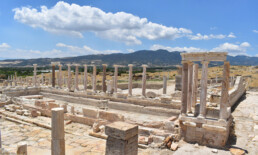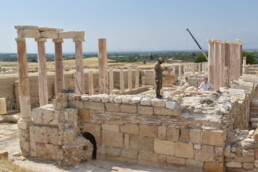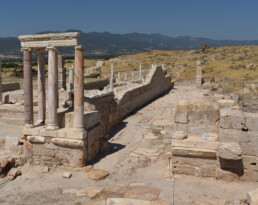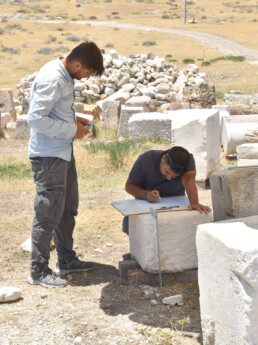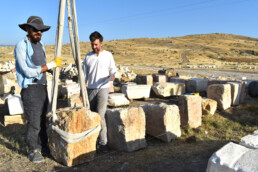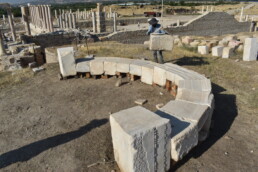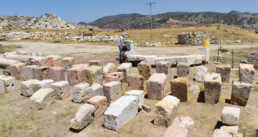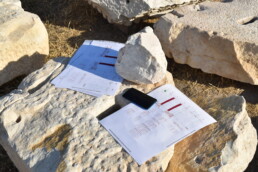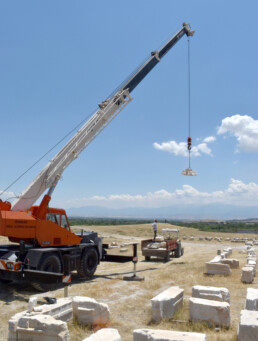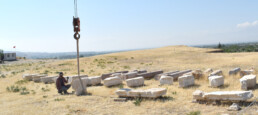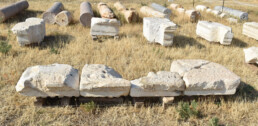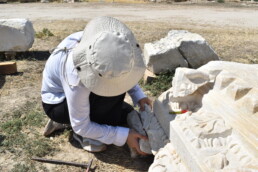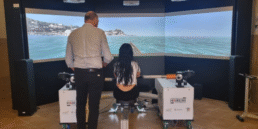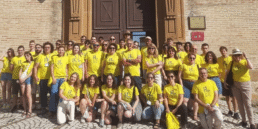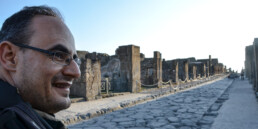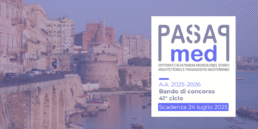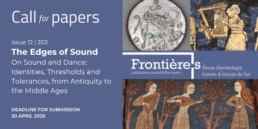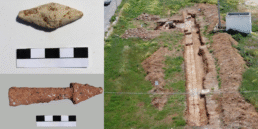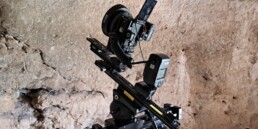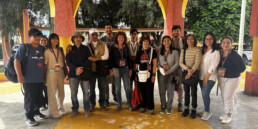A Joint Archaeological Laboratory for a deep knowledge of the Monumental Nymphaeum in Turkey
Since 2012, the city of Tripolis is the object of systematic excavations, conducted by the University of Pamukkale (Denizli), under the direction of Bahadır Duman, with the collaboration of the CNR ISPC coordinated by Tommaso Ismaelli. The joint archaeological research project between Italy and Turkey focuses on the architectural study of the Monumental Nymphaeum of the Lydian city (Denizli, Turkey) discovered in the 2016 campaign.
An exceptional case-study
The Nymphaeum was constructed in the 2nd century A.D. and underwent an impressive anastylosis in the 5th century A.D. The multi-storey façade, in white and coloured marble, adorned with statues and inscriptions, has been found in a collapsed position inside the pool. Due to its excellent state of conservation, the Nymphaeum represents an exceptional case-study to analyse a large imperial-era building site and its late-antique restoration.
The Tripolis Excavations didn’t stop
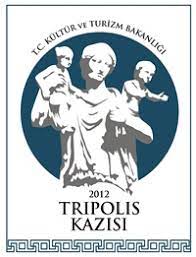
Even during the 2020 emergency period due to COVID pandemic, the works on the Nymphaeum didn’t stop. The team of Tripolis Excavations, headed by Prof. Bahadır Duman (University of Pamukkale), completed the excavations on the south side of the pool. Meanwhile, in Italy the project for the anastylosis of the Ionic columns and the aediculae of the first order was developed. Thanks to the efforts of Tripolis Excavations, even in this difficult period, the beautiful columns of Egyptian granite and local alabaster were erected on the stylobate, with an impressive chromatic and spatial effect.
A step forward
In the 2021 summer campaign, the work on the site of the CNR ISPC team was resumed and the Joint Archaeological Laboratory at Tripolis ad Maeandrum takes a step forward in the reconstruction of the Monumental Nymphaeum. First, the activities focused on the survey of the in-situ structures of the Nymphaeum. An accurate 3D photogrammetric model, coupled with total station survey, was developed, aimed at documenting the present situation, with the well-preserved marble and mortar coatings of the walls. The survey and study of the structures offered many insights into the building history of the Nymphaeum. While the outer walls were completely reconstructed with bricks and small blocks at the beginnings of the 5th century AD, the inner part of the pool was preserved in its formed layout.
New data acquired
Important new data were also acquired on the layout of the north sector of the Nymphaeum, which is crossed by an east-west street. The analysis of the numerous collapsed marble and travertine blocks revealed the existence of two superimposed barrel vaults at the first and second storey, which supported the colonnade and pediment of the third order. This impressive and baroque solution represents a unique feature of the Monumental Nymphaeum of Tripolis. The blocks were carefully catalogued, drawn, and displayed on the ground according to their type, for further study and the anastylosis.
Important information was also acquired on the arrangement of the aediculae of the first order, through the assembly on the ground of the previously studied cornices. The layout of the various aediculae, which was supposed on the basis of technical features and decoration, was significantly confirmed by the assembly on the ground, with important advantages for the future anastylosis project.
Further progress made by the Joint Archaeological Laboratory
Finally, the team made further progress in the study of the second order, by collecting new data on the cornices with modillions. Cataloguing and photographic documentation were coupled with the search of missing fragments and their subsequent restoration, which is ongoing also thanks to students of the Pamukkale University.
The activities of CNR ISPC will continue in the fall campaign, in order to complete the assemblage of the entablature of the second storey on the ground and the anastylosis of the marble arches.
Many thanks are due to Prof. Duman, director of Tripolis Excavations, and all the team, composed of Italian and Turkish archaeologists, restorers, MA and PhD students, especially to Sara Bozza (CNR ISPC), Sezer Sayan, Emre Avcı, Selim Voyna, Serkan Katırancı, Tolga Candur (Tripolis Excavations).
